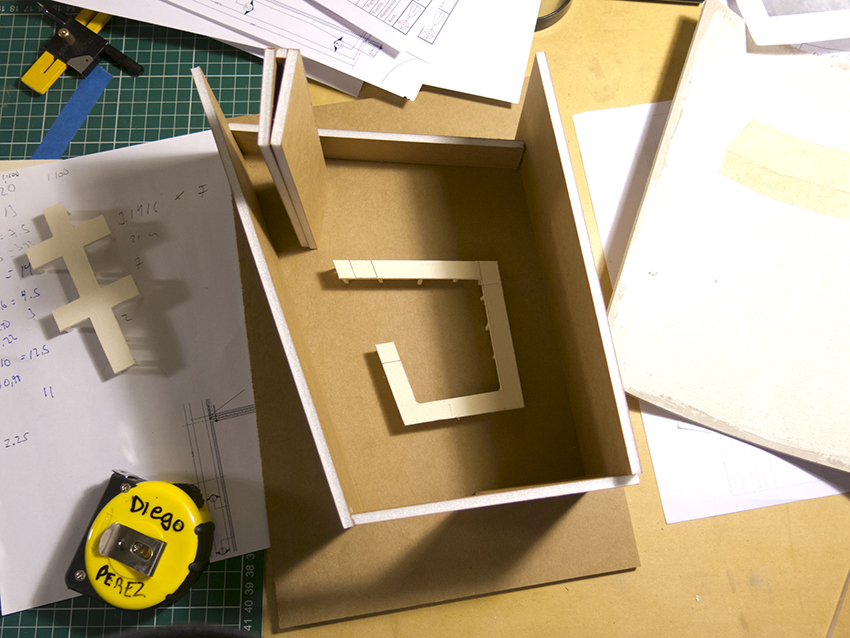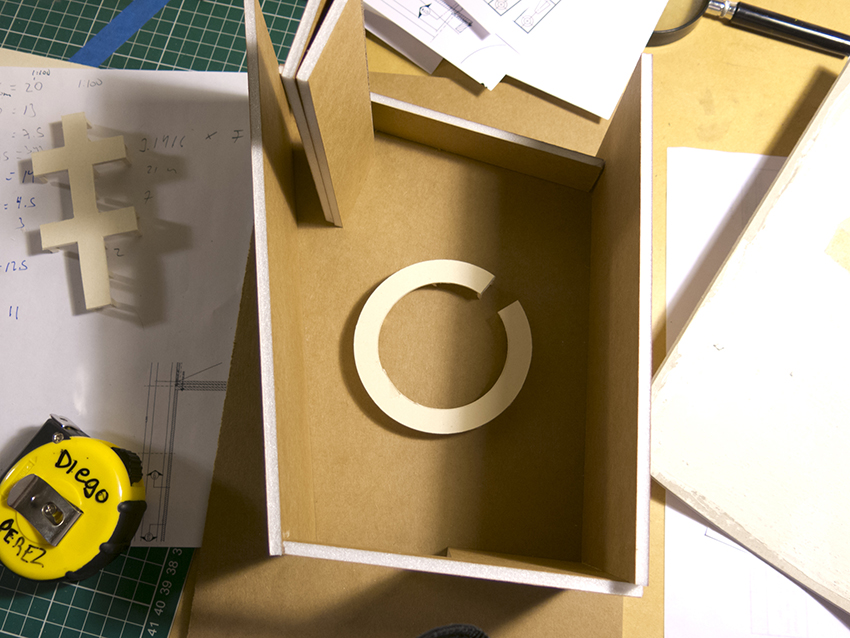



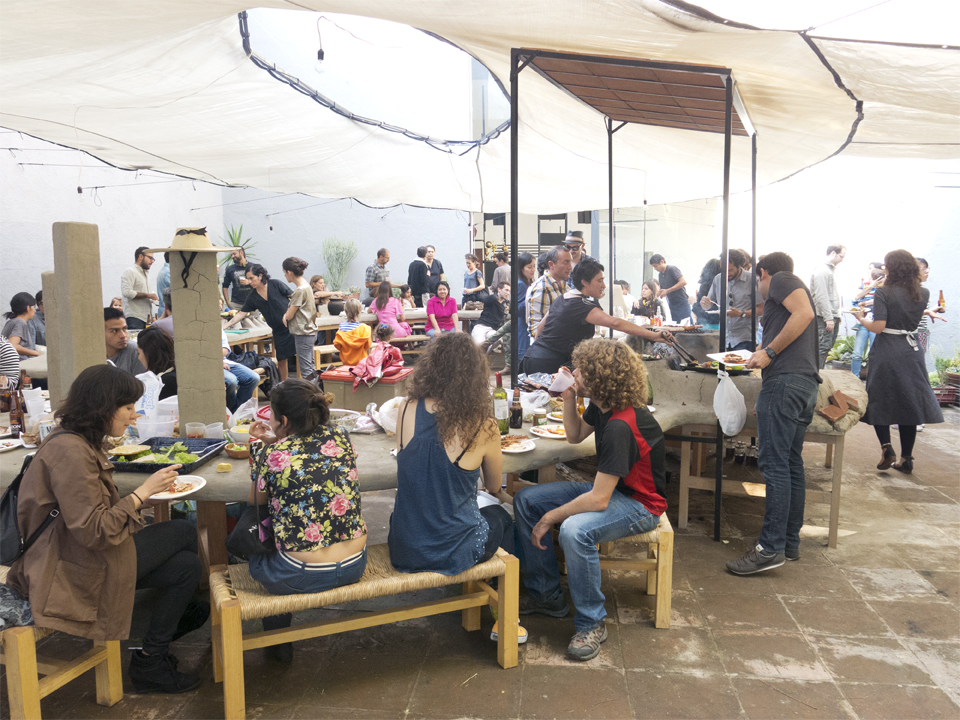
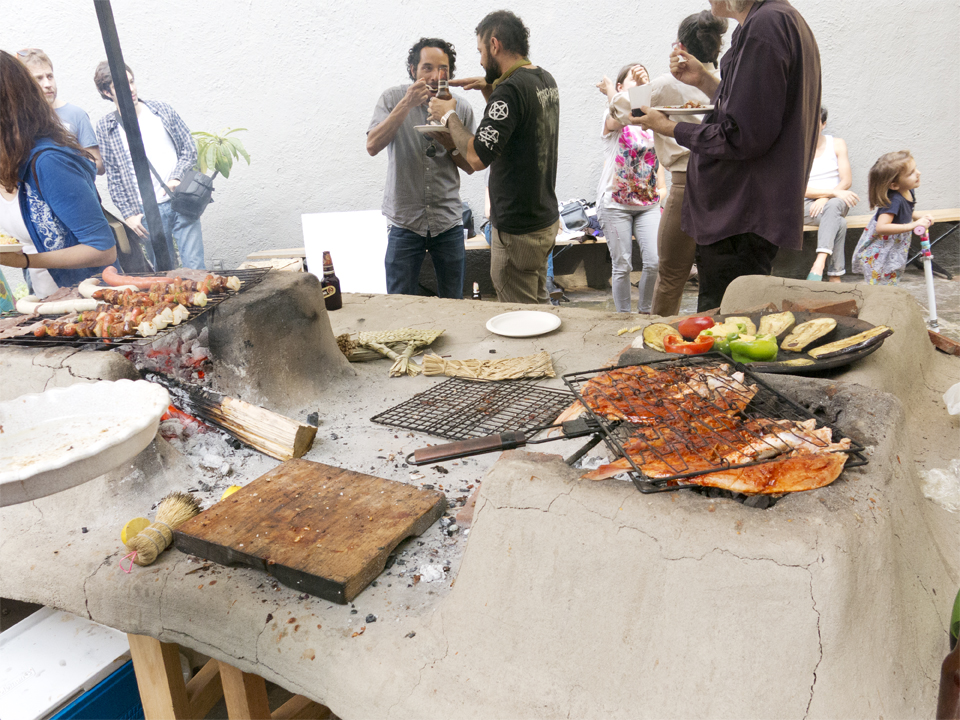
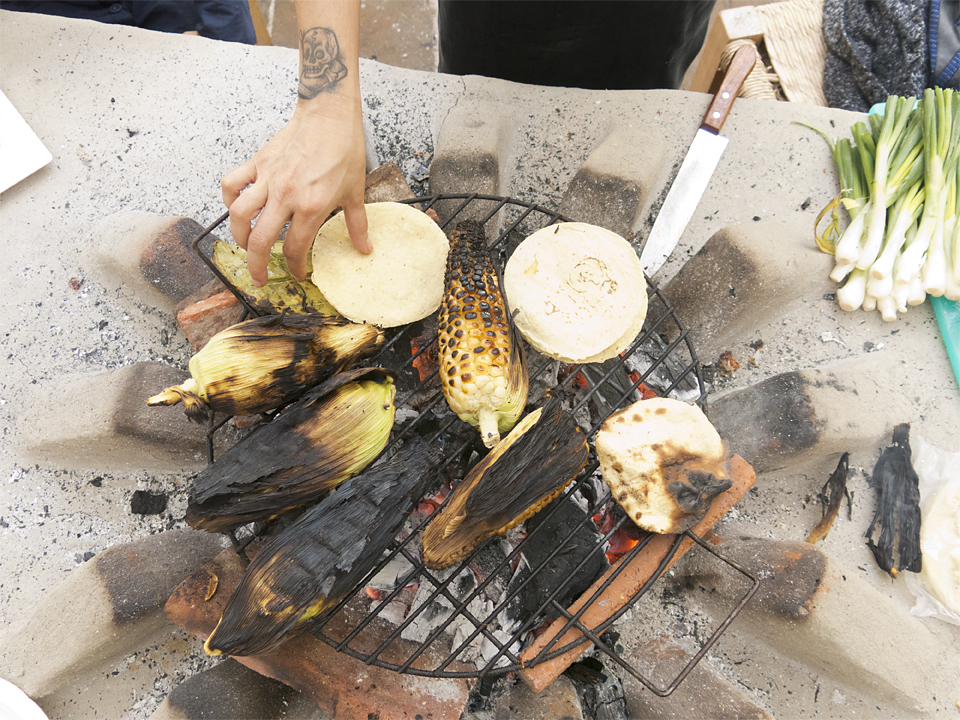
Nuestra casa sería un campamento
Por Mauricio Marcin.
En la apariencia del tiempo, corre nuestra vida. Y ésta se sostiene en la dietética y la respiración.
A pesar del surgimiento en el mundo de diversos movimientos veganos –incipiente moda–, nuestra época es omnívora: se come todo.
En términos generales el hombre sigue siendo el lobo del hombre. El progreso es el lobo más salvaje y se come al buen salvaje y al tercermundista en desarrollo. Y hay quienes no quieren desarrollo. Diógenes, por ejemplo, quien comió pulpo crudo y murió por ello. Él rechazó a Prometeo, quien robó el fuego a los Dioses para entregárselo a los hombres, que lo utilizan para quemar la carne y los alimentos: el caldero y la cazuela.
En actitud contraria a Diógenes decidimos participar, con pena o sin ella, de la humanidad. Y podemos congratularnos de lo que el pulgar oponible inició. O no. A quien sentencia “Vivir es un mal”, puede sugerírsele, “No, vivir mal…”
La construcción de una chimenea.
Tras sendos viajes a la barra de Coyuca, en Guerrero, Diego Pérez resolvió mover dos toneladas de barro y arena hasta el patio del Museo Experimental El Eco en la ciudad de México. ¿Para qué? Para crear una cocina común, y un hogar temporal[1].
La mesa-cocina sirve a varios fines que el museo procura –además de la exhibición de objetos. El Eco es un dispositivo que presupone acciones y las faculta. La mesa es, a su vez, lo mismo. Está hecha para usarse; que por ella corran el placer y la inteligencia.
Descripción de las transformaciones
Un lado de la barra de Coyuca es golpeado incesantemente por el abierto mar, el otro es suavizado por las ondas del agua de la laguna. En medio de las dos aguas vive Reynold; pescador, cocinero, padre de familia. Reynold hace aparecer a su primo José Luis quien se encarga de sacar el barro del fondo de la laguna.
A medio metro debajo del agua, la tierra es barro en perfecto estado para modelar. Ese mismo barro es el que los propios habitantes de Coyuca (y de la costa de Guerrero en general) utilizan para crear sus chimeneas y cocinar ahí los alimentos. Esta técnica constructiva de los fogones se ha transmitido de generación en generación, con variaciones, y continúa bien vigente. Diego Pérez la aprendió de estas personas para replicarla en la ciudad de México.
Una chimenea elíptica
Para la construcción de la mesa, además de la técnica nativa de Coyuca, Pérez aludió la estética de Mathias Goeritz. Como soporte para un comal, las torres de Satélite.
La obra de Pérez supone una estética ética; es objeto de conocimiento y de uso. Contrario a pensar que es útil porque es hermosa, podría decirse de su mesa que es hermosa porque es útil.
Lo que alrededor de ella sucederá, no se sabe. Es previsible un pescado a la talla, son previsibles las tortillas en los comales, y los comensales.
Para esta ciudad “que es un páramo”, Pérez construye algo similar a un jardín o un refugio, un lugar habitable y público. Puede traer carbón o leña, o un libro, cocinar, cuidar el lugar y pensar la propuesta de Montaigne: Nuestra más eximia y gloriosa obra maestra es vivir como se debe.
[1] La palabra hogar proviene del latín focus de donde viene la castellana fuego. Es sabido que en las cuevas se mantenía una llama viva siempre que se podía.
Our House is a campsite
by Mauricio Marcin.
Our lives runs through in the ilusión of time. These, are sustained in dieting and breathing.
Even though there have been diverse vegan movements —still fledgling fads— our times are omnivoruous: we eat everything.
Generally, mankind is still the wolf of mankind. Progress is the most savage wolf ; he eats the Good Savage and the developing Third-Worlder. There are those who don’t want any development. Diogenes, for example, ate raw octopus and died in consequence. He rejected Prometheus, who stole the Fire of the Gods to bring it to mankind, who use it to burn meat and food: the cooking pot and the casserole pot.
Contrary to Diogenes, we decided to be part –ashamed or not– of human kind. And we can congratulate ourselves of what the opposable thumb started. Or not. To who declares: “Living is bad”; we can sugguest: “No, living bad...”
The building of the Chimney.
After long trips to the Barra de Coyuca in Guerrero, Diego Perez decided to move two tons of clay and sand all the way to the Museo Experimental El Eco’s patio. What for? To create a comunal kitchen and a temporary hearth[1].
The table-kitchen, beside the exhibition of objects, works for various purposes that the museum provides. El Eco is a vessel that assumes and facilitates actions. The table is –in its own way– the same. It was made to be used; for it to host pleasure and inteligence.
Description of the transformations
One side of Barra de Coyuca is beaten endlessly by the open sea, the other is tampered by the soft waves of a lagoon. Reynold lives in the middle of both waters: fisherman, cook, family man. Reynold brings his cousin José Luis to put him in charge of taking out the clay from the lagoon’s floor.
The clay that lays half meter under water is perfect for modeling.
It’s the same clay that the inhabitants of Coyuca (and the rest of the Guerrero coastline) use to build their chemnies to cook their food. This stove building technique has been passed on from one generation to the next; with little variations, but still current. Diego Pérez learned this technique from these people to duplicate it in Mexico City.
An eliptic chimney.
In order to build the table, beside the Coyuca native technique, Perez alluded toMathias Goertiz aesthetics. The Satélite towers are the foundation of a griddle.
Perez work implies an ethical aesthetic; its an object of knowledge and use. Contrary to the idea that it is useful because it’s beautiful, we could say that his table is beautiful because it’s useful.
We don’t know what will happen around it. A “pescado a la talla” is to be expected, “tortillas” in the griddle are expected, and also diners.
For this city “that is a waste land”, Pérez built something similiar to a garden or a shelter, a public and living place. You may bring charcoal or wood, or a book; you can take care of this place and think about Montaigne’s proposal: Our most petty and glorious master piece is living as it should be.
[1]The word in Spanish for hearth, hogar, comes from the Latin focus, which is the root for the Spanish word fuego (fire). It’s common knowledge that a bonfire was maintained whenever possible.
